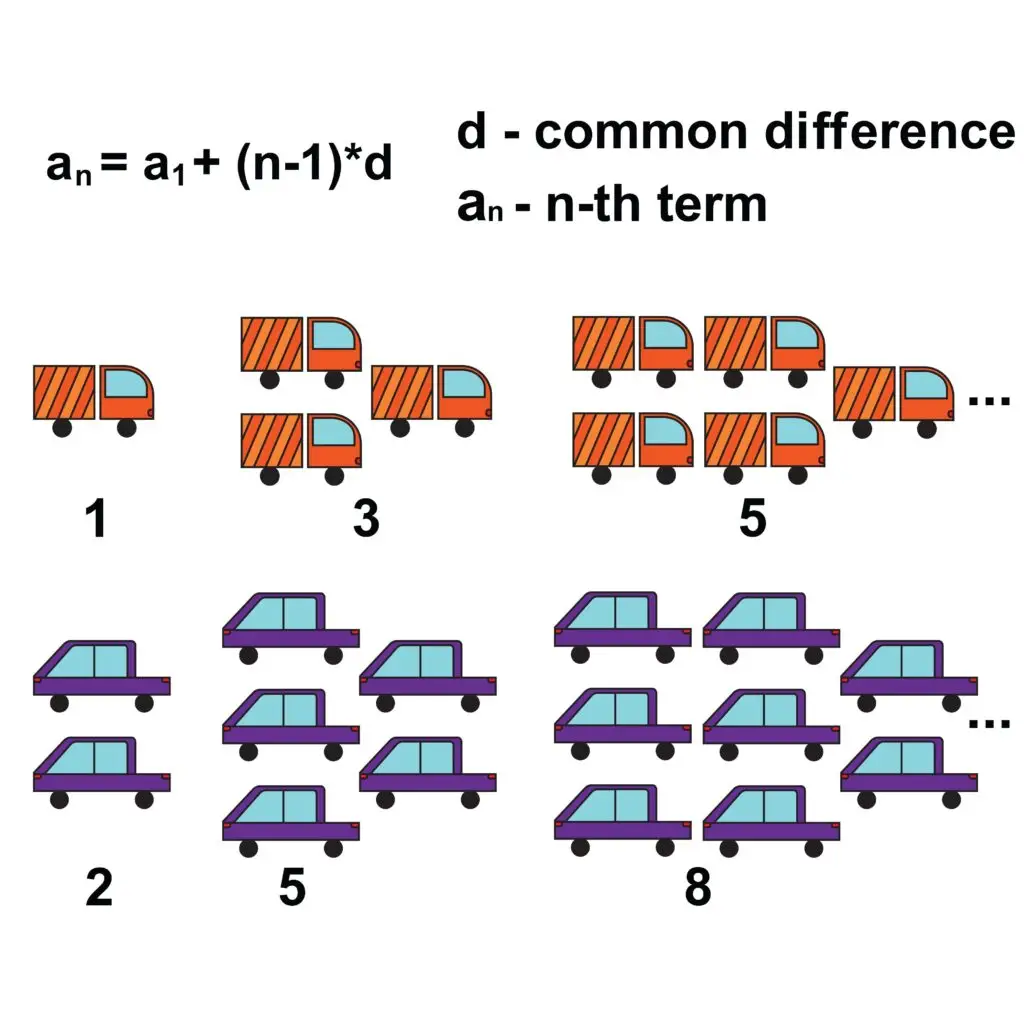Arithmetic Sequence
What is an Arithmetic Sequence?
An arithmetic sequence is a list of numbers where the difference between each pair of consecutive numbers is always the same. For example, in , the difference is
.
General Form of an Arithmetic Sequence
An arithmetic sequence can be written as:
where:
is the first term,
is the common difference, and
- each term is calculated by adding
to the previous term.
For example, in the sequence :
- The first term is
,
- The common difference is
, because
and
.
Key Characteristics
- Common Difference: The common difference
is found by subtracting any term from the term that follows it:
where
is the
-th term and
is the term before it.
- Formula for the
-th Term: The
-th term of an arithmetic sequence is given by:
- where:
is the
-th term,
is the first term,
is the common difference, and
is the position of the term in the sequence.
- Example: For the sequence
:
,
,
- To find the
-th term:
- where:
Applications of Arithmetic Sequences
- Real-Life Examples:
- Counting patterns, such as even numbers (
) or odd numbers (
).
- Incremental savings: If you save a fixed amount each week, the total savings follows an arithmetic sequence.
- Counting patterns, such as even numbers (
- Mathematical Applications:
- Used in summation problems and number patterns.
- Helpful in solving problems involving linear relationships in algebra and geometry.
